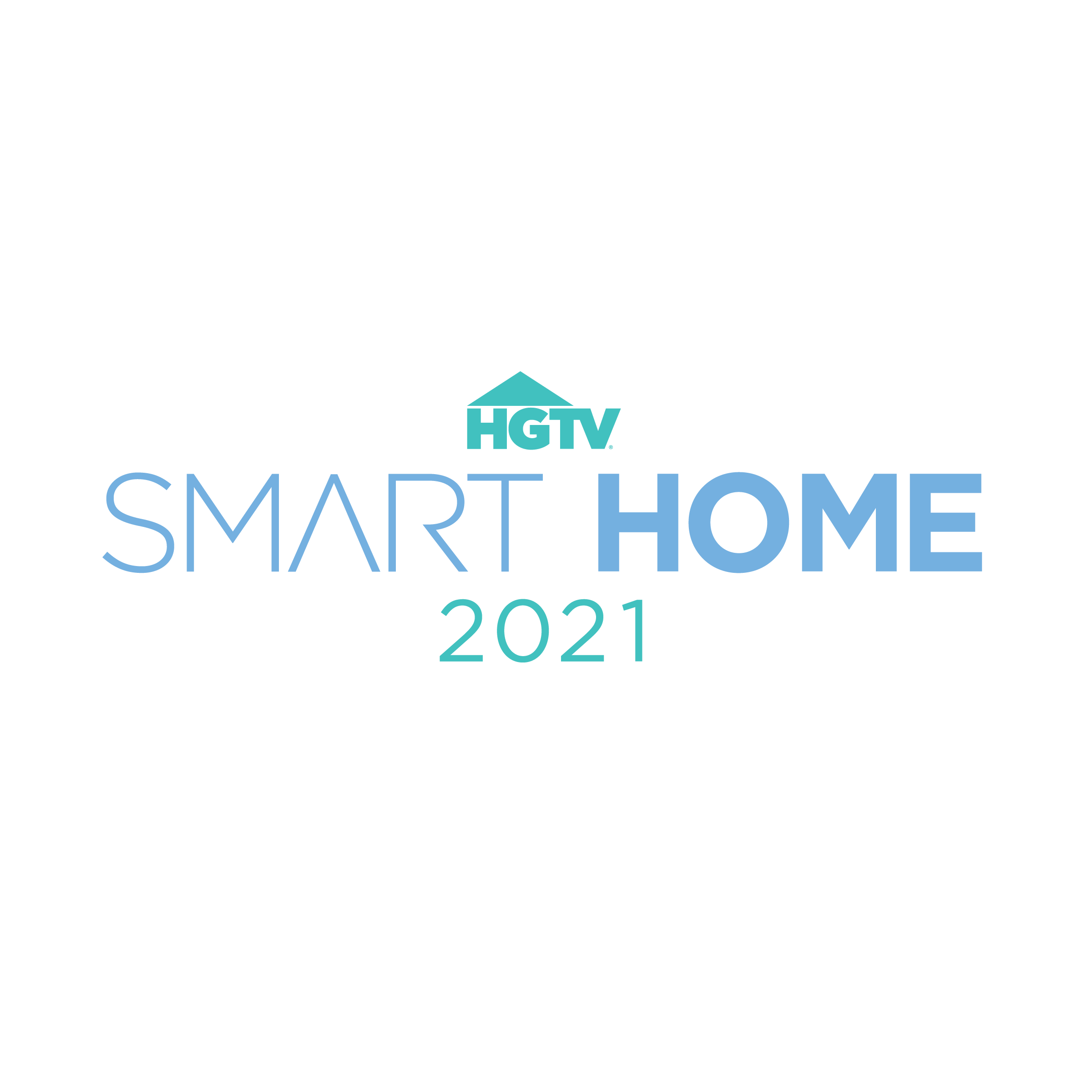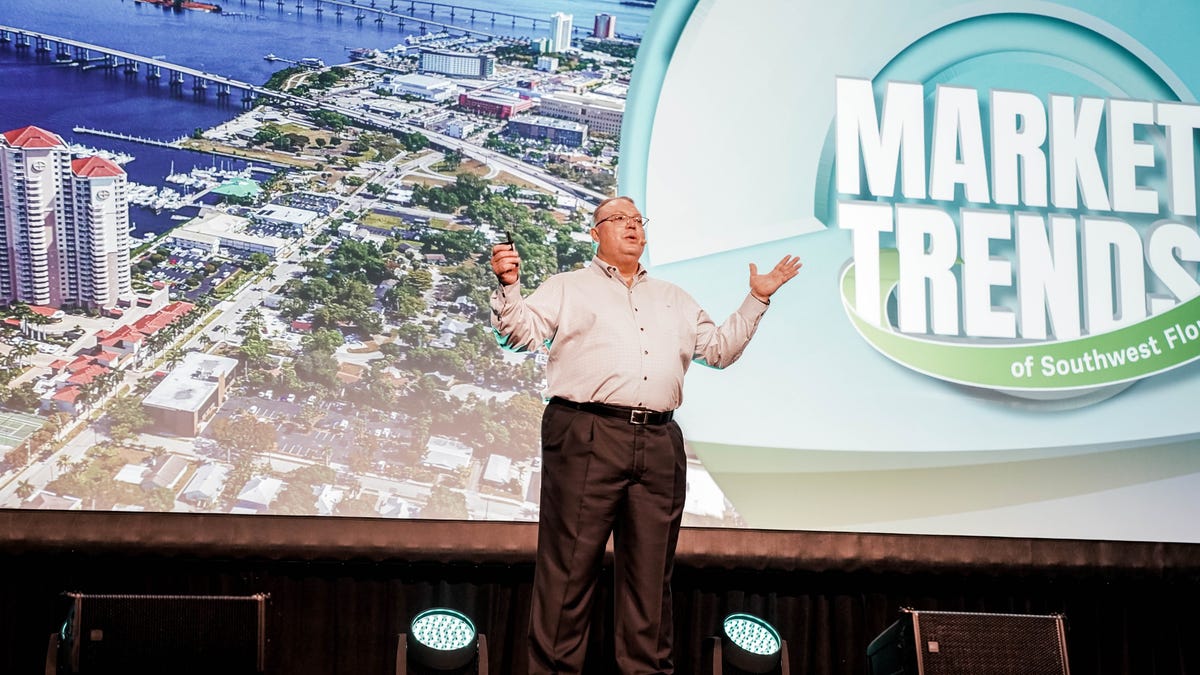Market correction coming to Southwest Florida’s housing market

HGTV_Smart_Home_2021_Winner_Surprise_Video_2
HGTV has announced the winner of its Smart Home in Naples.
Naples Daily News
Will the white-hot housing market in Southwest Florida continue, correct or crash?
Denny Grimes, president of his team at Keller Williams Realty, offered an answer to that burning alliterative question at a Market Trends summit Thursday night.
His answer? “It’s going to correct and it’s already started,” he said.
At the night-time event, three local real estate experts delivered data-packed presentations on where the region’s market has been, where it stands and where it’s headed. They shared both residential and commercial trends and statistics with a crowd of nearly 600 at the Caloosa Sound Convention Center & Amphitheater in downtown Fort Myers, with others attending virtually.
As for the residential market, signs of a correction appeared a few months ago, when buyers began to balk at the high prices driven up by a combination of strong demand and low inventory.
“I think the demand is still there, the demand is still high,” Grimes said.
While inventory remains low, limiting potential sales, it’s not the “big issue,” he said, rather it’s price intolerance.
“We are starting to see prices level,” Grimes said. “We are starting to see inventory slightly grow.”
In a nutshell, he said: “The peak insanity is over.”
That’s bad news for sellers.
“If sellers wanted to sell at the very peak, they missed it,” Grimes said.
In case you missed it: In the Know: With more real estate records, fewer in SWFL can afford home ownership
More: Residential lots command record prices in parts of Southwest Florida
Not sustainable
The spike in home sales and prices has been driven by several factors, but such increases are just not sustainable, he said.
“We can’t have double- and triple-digit improvement numbers that can go on forever,” Grimes said.
Illustrating his point, he shared statistics on single-family resales for January through June, comparing them to the same months last year. Here’s a look at them:
- In Collier, 4,749 homes sold, up 66.3%
- In Lee, 10,254 homes sold, up 44.7%
- In Charlotte, 3,281 homes sold, up 42.1%
In the first half of 2021, median prices for single-family homes rose 20.8% in Charlotte, 29.3% in Lee and 37.5% in Collier over the same months last year. The median is the price at which half of the homes sell for more and half for less.
For a bit of fun, Grimes shared a few outliers with hefty price tags in areas usually thought of as affordable, including a home in Lehigh Acres built in 1987 going for nearly $600,000 and one in north Cape Coral priced at $2.5 million, even though it’s not on the water.
He offered other telling statistics, including a more than 200% increase in homes selling for more than $5 million in the Naples area this year, when compared to 2020 — demonstrating the resilience and strength of its uber-luxury market.
“It has broken all conceivable records,” Grimes said.
On the flip side, he said there isn’t a single home for sale under $100,000 in Collier, and just one in Lee. Back in 2009, you could have found about 4,200 in that lower price bracket between the two counties, as the market began its recovery from The Great Recession, Grimes said.
Residential lot sales in such areas as Cape Coral, Lehigh Acres and Golden Gate Estates have taken off, due to the low inventory of homes on the market, Grimes said.
The trio of warmth, water and way of life continues to draw residents to Southwest Florida, Grimes said. Without all of those attributes, he warned it could be a far different story in the local real estate market, emphasizing the importance of having beaches with clean water and communities with good planning to accommodate growth.
Although the local housing market is cooling, Grimes remains upbeat about it.
“We just experienced a market in a million,” he said. “That is over and now we are moving from insane, back to rational. It will feel slow, however, we are still moving forward “
Check this out: HGTV announces winner of 2021 Smart Home in Naples
More of our real estate coverage: Marble-clad mansion in Southwest Florida sells within hours
Fleeing to Florida
Randy Thibaut, the CEO and broker for LSI Cos., offered more insight on lot, land and new home sales, as well as residential permits, which have skyrocketed in large part due to the coronavirus pandemic.
Northerners are migrating to Florida for several reasons, including the absence of state taxes, a lower population density and more wide-open spaces where residents can safely distance themselves from others who might have or spread COVID.
Thibaut likened the exodus from states such as New York, New Jersey and Chicago to a stampede, or herd mentality, saying it’s benefitting Southwest Florida in a big way.
“It’s a very chaotic market, probably the most chaotic market I’ve ever experienced in my career,” he said.
From August of last year to July of this year, builders pulled a total of 21,885 residential permits in Collier, Lee and Charlotte counties. That’s a nearly 20% increase from the previous 12 months, but it’s far from the record, Thibaut said.
During the height of the real estate boom in 2005, residential permits reached 44,000, or about double the number expected for this year.
“We are going to end up with around 23,000 permits and that is not a boom,” Thibaut said. “We don’t have any makings of a crash because we just don’t have the inventory to crash with. We expect there to be a correction in the market.”
In the 12 months ending in June, here’s what permit activity looked like in comparison to the previous year in the region’s largest counties:
- Charlotte: 3,684 permits, up more than 50%
- Lee: 11,925 permits, up more than 11%
- Collier: 6,276 permits, up more than 22%
Thibaut noted that Southwest Florida is 10 years into an “up market,” which typically only lasts for seven years. He attributes the longer stretch of positive growth primarily to the “COVID frenzy.”
“Single-family is knocking it out of the park in all counties,” Thibaut said. “For buyers, it’s the hardest product to get right now.”
Meanwhile, apartment development has surged again, to meet the growing demand from prospective buyers who have been priced out of the housing market, or who can’t find what they want due to the severe shortage of homes for sale.
With the housing frenzy, land sellers have been in the driver’s seat, especially if they have land that’s zoned and ready to build on, Thibaut said.
Going east, young man
New development isn’t as much about “location, location, location” anymore, he said, but where there’s still land available to build on. In Collier County, that has led to a push toward the east, including plans for nearly 8,000 homes in three rural villages spearheaded by local developer Collier Enterprises on the eastern edge of Golden Gate Estates.
Thibaut described the Collier County Commission’s successive approval of the three villages over the past two years, as “perfect timing.”
“There is demand for that product,” he said.
Previously: Collier County commissioners approve two rural villages and give thumbs up to town concept
In fact, the rural town of Ave Maria continues to lead the way when it comes to new home construction in Southwest Florida. From August 2020 to July 2021, 712 residences were permitted.
Babcock Ranch, in eastern Lee and Charlotte counties, is in a close second, with 691 units permitted over the same year.
While big builders account for most of the construction activity, small builders have made a resurgence, with about 150 coming back into the market, meeting a demand for homes on scattered lots in such areas as Golden Gate Estates and Lehigh Acres. Combined, these smaller builders have pulled more than 6,000 permits over the past year, Thibaut said.
Other builder trends, he said, include constructing homes to rent, as well as tiny houses, like those seen on the HGTV show, Tiny House Hunters, featuring home seekers looking to downsize their footprint.
Commercial sales thrive
The event concluded with a snapshot of the commercial real estate market, shared by Justin Thibaut, president of LSI Cos.
One of his biggest points? Commercial sales volume in the three counties rose by 275% in the second quarter of this year, when compared to the same months last year.
Thibaut noted a statewide lockdown was still in force for part of the quarter last year, curbing some sales that might have happened otherwise.
In the second quarter, commercial sales rose from $150 million last year to $560 million this year. Nearly 50% — or half — of that increase came from the sale of retail properties, Thibaut said.
“I don’t think anyone was anticipating that,” he said.
In the industrial market, occupancy and rents have been on the rise.
The bigger news? Over the past year, 2.2 million square feet of industrial space has been permitted in Collier and Lee counties, resulting in a wave of new construction, Thibaut said.
He attributed the surge in construction in part to the demand for large-scale distribution centers for such companies as Amazon and Uline, one of the largest suppliers of shipping materials in North America, which is expanding in Collier County.
On the retail side of the market, rents and occupancies are trending up too, despite the industry’s many challenges, including a labor shortage, Thibaut said. In part, the increases, he said, reflect the continued need for brick-and-mortar locations by service-oriented retailers, such as hardware stores and dry cleaners, to serve a growing population in Southwest Florida.
In his presentation, Thibaut highlighted some big entries into the market, including a new 103,000-square-foot BJ’s Wholesale Club in Port Charlotte, which is currently under construction. The expansion of the members-only warehouse club in Charlotte County reflects its massive population growth, as well as the transition to neighborhood retail, he said.
The great return, or not
As for the office market, it too has seen increases in occupancies and rents, Justin Thibaut shared.
He questioned, however, whether it could in fact be attributed to the expected “great return” of virtual employees — who were forced to work remotely from home because of the pandemic — to their physical offices.
He described some offices as economically, rather than physically, occupied. While many companies continue to pay their rent, when their leases come up for renewal Thibaut questions how many might walk away from them, which could quickly drive up vacancy rates.
Hospitals and medical groups are expanding with a vengeance in Southwest Florida, which has helped fill voids in both the office and retail markets across the three counties, Thibaut said. Looking ahead, he said he doesn’t see that trend slowing any time soon.
He highlighted some of the biggest commercial deals this year, including the sale of the fully-leased Versol Apartments for nearly $70.4 million, or $239,000 a unit, a few months ago.
Not long ago, some local real estate professionals questioned whether the market for apartments had become oversaturated or overbuilt, but those days are gone, with demand once again outpacing supply, making them a more attractive investment, Thibaut said.
As a result, he said, Southwest Florida will continue to see big apartment deals indefinitely.
“They are not going to stop anytime soon,” Thibaut said.



